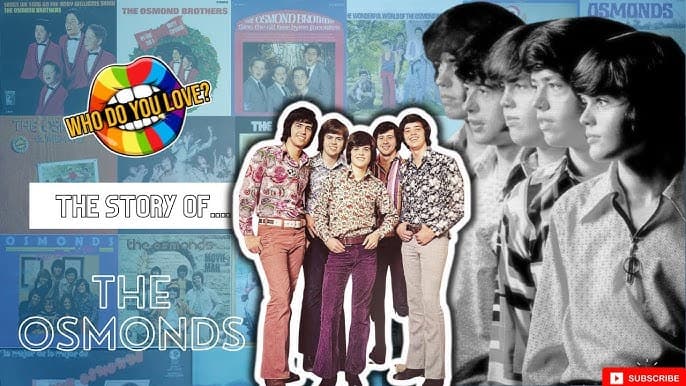
Rediscovering “I Can’t Get Next to You” – The Underrated Rendition by The Osmonds
In a time of fervent melodies and shifting cultural tides, the version of “I Can’t Get Next to You” rendered by The Osmonds invites us to pause, reflect and drift into a memory-filled reverie of the 1970s, when pop and soul collided, and family-bands dared to tackle songs born of tumultuous times.
Although the song was originally carved into the cultural memory by The Temptations in 1969 — where it soared to No. 1 on the U.S. Billboard Hot 100 and held the top spot on the R&B chart for weeks. – The Osmonds’ cover, released in 1974, offers a wistful alternative, a familial, more polished and pop-inflected voice interpreting the same yearning. According to the Portuguese chart record, the Osmonds’ version appears in their discography and is listed for Portugal in 1974, though chart-peak details are scant.
By the time The Osmonds arrived at this song, they were no longer the fledgling quartet of Utah but a quintet turned pop-phenomenon. Their earlier triumphs – “One Bad Apple”, “Yo-Yo”, “Down by the Lazy River” – had placed them squarely in the early 1970s pop firmament. The choice to cover a deeply soulful, multi-lead vocal number like “I Can’t Get Next to You” speaks to their ambition, and to a moment when pop groups sought to broaden their palette.
What animates this particular rendition is the interplay between the Osmonds’ trademark clean-cut harmonies and the emotionally charged roots of the song. The original by the Temptations was steeped in tumult — the sound of a group at Motown moving into psychedelic soul, voices layered in tension and urgency. The Osmonds, conversely, bring a smoother surface, but that doesn’t lessen the yearning. Instead, it stands as a reminder of how longing and desire transcend genre labels.
For a listener who remembers the era, the Osmonds’ version invites nostalgia: the car radios of the mid-1970s, the family-friendly television variety shows, the shift from teen-idol squeals to more grown-up emotional stirrings. The song becomes a bridge between youthful exuberance and adult reflection. Through their voices, the plea “I can’t get next to you” doesn’t only mean romantic frustration — it also echoes a generational yearning: to touch, to connect, to belong.
Behind the music lies the story of the Osmonds themselves — a family band forged in the Church, moving from barbershop quartet to MGM teen idols to adult-conscious performers. By 1974, they were aware of their brand, their limitations, and probably the faint whisper of a changing musical landscape. Their pre-existence as friendly faces on variety shows and their aura of wholesomeness offers an interesting contrast with the soulful roots of this song; in covering it they stretch beyond the bubblegum pop label, reaching toward something more mature.
The meaning of the song remains universal: the frustration of being so near, yet feeling so distant; the ache of wanting to touch another’s heart, but being locked out. In the context of the Osmonds, it reads almost as a metaphor for their own journey: near peak fame, yet perhaps wanting to reach further emotional or artistic ground. For listeners of my generation — those whose teens slid into the 1970s, whose pictures and vinyls have turned faint — this version evokes that bittersweet era.
The significance of this recording lies in its dual identity: it’s both a cover of a soul classic and a time-capsule for a pop family group trying to grow up alongside their audience. It reminds older listeners that the Osmonds could, for a moment, step into deeper terrain. It also shows how songs travel: conceived in the Motown machine, reborn in the hands of a Utah family band, and heard in living rooms, in cars, on AM radio.
While the chart performance of the Osmonds’ take did not rival the original, its value lies in the feeling it generates. The unfamiliar rhythm, the clean harmonies, the subtle shift of texture: these make us listen again, not just to the words, but to the context. The mid-1970s: a decade of change, of innocence fading, of music morphing. For those who lived through it, who heard the tune and thought of home, of youth, of loss and longing — the Osmonds’ version of “I Can’t Get Next to You” becomes a gentle mirror held up to our memories.
So today, whether you close your eyes and hear the echo of that time or simply reflect on the nature of longing, may this recording reacquaint you with a subtle invitation: to reconnect, to bridge the space between then and now, between voices and hearts, between that “you” and the “me” who remembers.